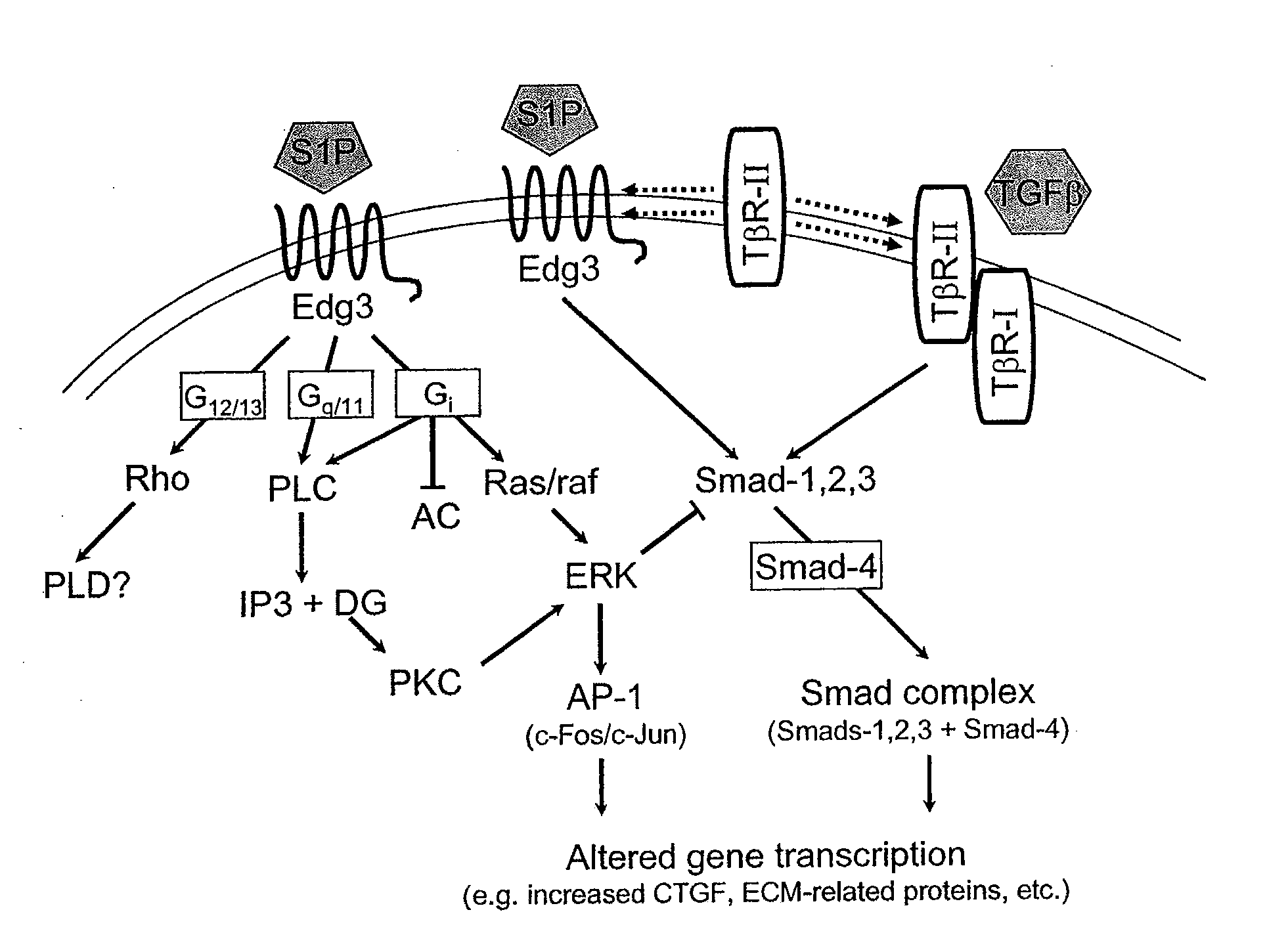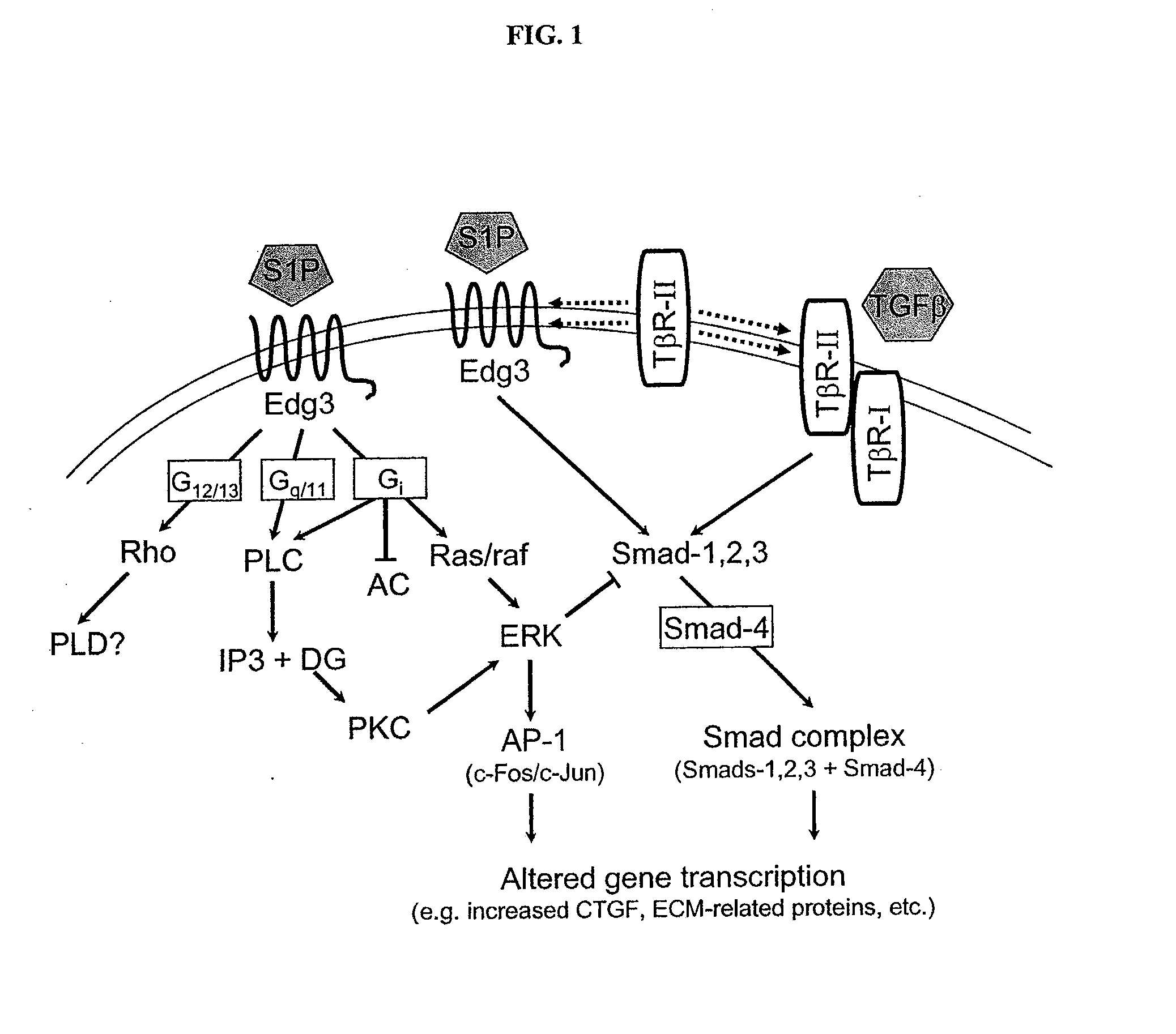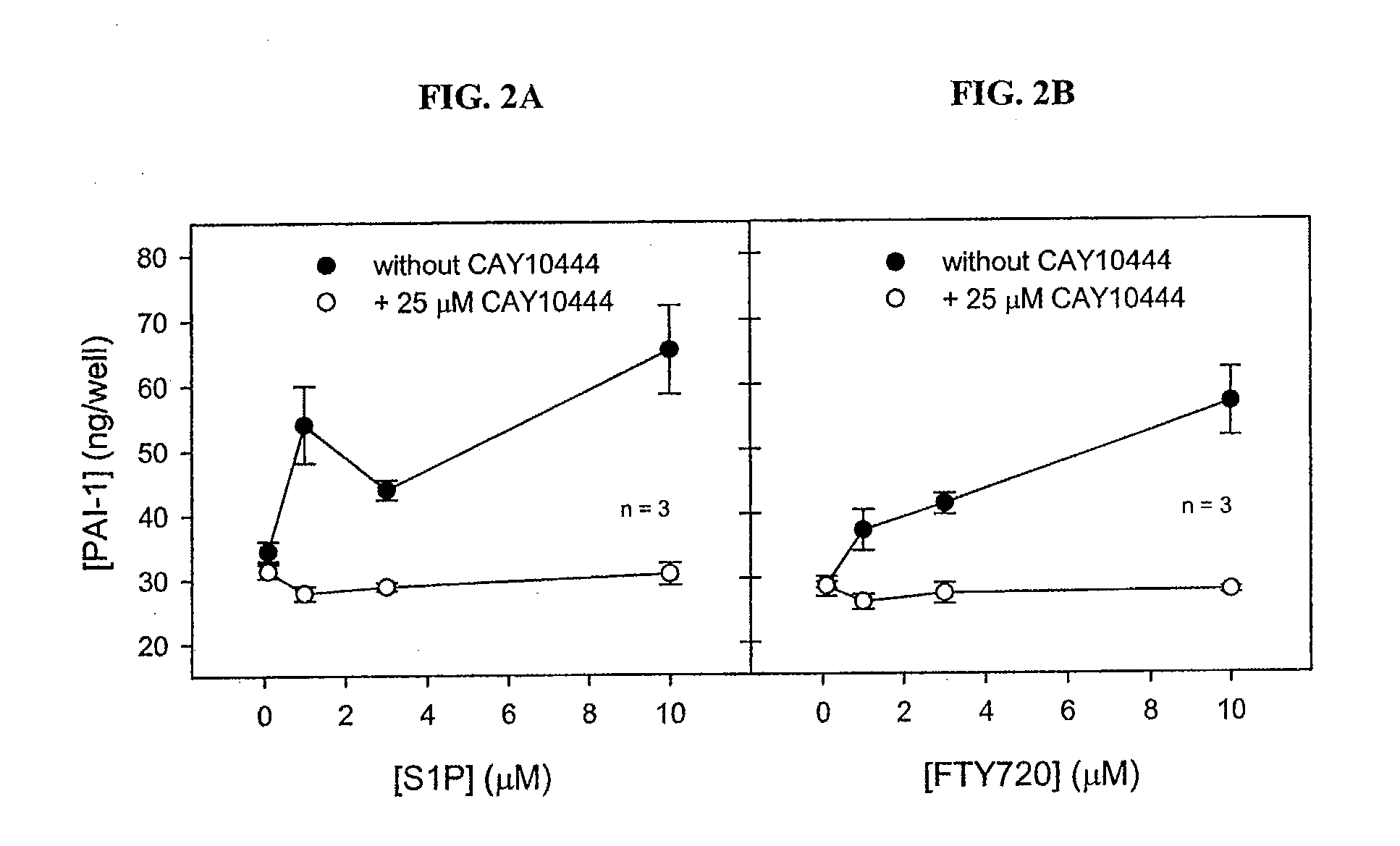Antagonists of endothelial differentiation gene subfamily 3 (edg-3, s1p3) receptors for prevention and treatment of ocular disorders
a technology of endothelial differentiation and receptors, which is applied in the field of antagonists of endothelial differentiation gene subfamily 3 to achieve the effects of reducing natural ligand binding, attenuating smad signaling, and attenuating smad signaling
- Summary
- Abstract
- Description
- Claims
- Application Information
AI Technical Summary
Benefits of technology
Problems solved by technology
Method used
Image
Examples
example 1
Inhibition of S1P-Stimulated CTGF Gene Expression
[0070]The effect of Edg3 receptor antagonism on CTGF gene expression in cultured human trabecular meshwork cells can be determined as follows. Transformed or non-transformed human TM cell cultures (Pang et al., Curr Eye Res, Vol. 13:51-63, 1994; Steely et al., Invest Opthalmol V is Sci, Vol. 33:2242-2250, 1992; Wilson et al., Curr Eye Res, Vol. 12:783-793, 1993; Stamer et al., Curr Eye Res, Vol. 14:611-617, 1995) are treated with or without a stimulatory amount of sphingosine-1-phosphate (S1P) and with or without Edg3 receptor antagonists for a specified period of time. Separate cultures are also treated with the requisite diluent vehicle(s) used in order to serve as controls. Total RNA is then isolated from the TM cells using Qiagen RNeasy 96 system according to the manufacturer's instructions (Qiagen).
[0071]Differential expression of CTGF after cell treatment is verified by quantitative real-time RT-PCR (QRT-PCR) using an ABI Prism®...
example 2
Inhibition of S1P-Stimulated Change in Expression of Extracellular Matrix-Related Proteins
[0072]The effect of Edg3 receptor antagonism on expression of extracellular matrix-related proteins by cultured human trabecular meshwork cells is determined as follows. Human TM cell cultures are split into replicate and / or experimental and / or control groups to which are then added control solutions or experimental solutions comprising diluent vehicle(s) (as controls) and / or S1P (as stimulatory agent) and / or Edg3 receptor antagonists. Levels of extracellular matrix-related proteins, such as fibronectin, plasminogen activator inhibitor I (PAI-1), collagens, fibrillin, vitronectin, laminin, thrombospondin I, proteoglycans, or integrins, are then measured in each cell culture group via standard enzyme-linked immunoabsorbent assays (ELISA). Such assays are well-known to those skilled in the art and are sensitive immunoassays which utilize an enzyme linked to an antibody or antigen as a marker for ...
PUM
| Property | Measurement | Unit |
|---|---|---|
| Fraction | aaaaa | aaaaa |
| Fraction | aaaaa | aaaaa |
| Volume | aaaaa | aaaaa |
Abstract
Description
Claims
Application Information
 Login to View More
Login to View More - R&D
- Intellectual Property
- Life Sciences
- Materials
- Tech Scout
- Unparalleled Data Quality
- Higher Quality Content
- 60% Fewer Hallucinations
Browse by: Latest US Patents, China's latest patents, Technical Efficacy Thesaurus, Application Domain, Technology Topic, Popular Technical Reports.
© 2025 PatSnap. All rights reserved.Legal|Privacy policy|Modern Slavery Act Transparency Statement|Sitemap|About US| Contact US: help@patsnap.com



